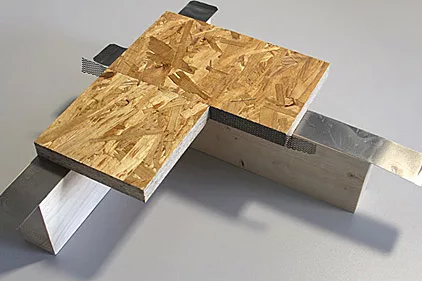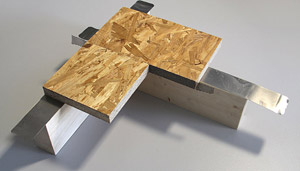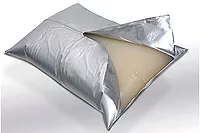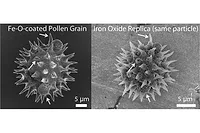Advancing Adhesives: Prefab Houses are Taped - Not Nailed - Together
An adhesive tape has been developed to hold the individual components together.

A finished house stands on what just a few days ago was an empty green field. Such a feat is possible due to components that are industrially prefabricated in a manufacturing plant for finished parts and then simply need to be assembled on the building site, also known as prefabricated houses. The individual wall, ceiling and roof components are usually made of wood.

|
First, the manufacturers make a frame structure out of squared timber in the plant, onto which they then fit boards made of timber-derived materials. Nails and staples hold the structure securely together. However, several considerations must be factored in: the squared timber must not be too narrow, or else the nails and staples can break out. In addition, wherever boards meet, there has to be a rib to which the manufacturer can attach the boards.
The ability to adhere these boards and the other timber parts together using adhesive would give the building planners a lot more flexibility in component design. Although some companies are currently using liquid adhesives in construction, this manufacturing technique has not yet become widespread due to some drawbacks: for the liquid adhesive to set, you either have to heat the entire board, including squared timber, or wait several hours—a time-consuming business that does not fit easily into industrial production processes.
Quick-Setting Adhesive Tape
Researchers from the Fraunhofer Institute for Wood Research, Wilhelm-Klauditz-Institut (WKI) in Braunschweig, Germany, have come up with an alternative with the help of their colleagues from the Institute of Joining and Welding at the Technische Universität Braunschweig.
“We’ve developed an adhesive tape that sets in under a minute to reliably and durably bond together the individual components,” said Andreas Zillessen, Ph.D., a scientist at the WKI. “The adhesive sets at the push of a button, so to speak. This means that when we apply the adhesive tape when assembling components, we can wait as long as we like without the adhesive drying out, as other kinds of adhesive would.”
The secret is inside the material itself: unlike ordinary adhesive tape, it does not consist merely of a backing material and adhesive—it also has its own “heating system” comprising a metal strip that is coated with adhesive on both sides. If you want to stick together two strips of wood, you place the adhesive tape in the right position, put the strips of wood in place, and then let an electrical current flow through the metal strip. The metal heats up, and the adhesive melts and binds to the wood. First the adhesive is turned liquid by the heat so that it gets into the pores in the wood; then it sets very quickly once it cools.
“At present, the gluing and setting combined take around a minute, but over the long term we want to make these processes significantly shorter,” Zillessen said.
The challenge for the researchers lies not only in finding the ideal adhesive and the most suitable metal strip, but also in optimizing the interaction of the three components. After all, the adhesive has to stick to the wood as well as to the metal.
“As the adhesive tape is designed to be used primarily for load-bearing bonding in buildings, it has to possess structural strength and durable adhesive qualities,” Zillessen said.
In order to attain these properties, the researchers are testing different adhesives and metal strips, and have already discovered the optimum adhesive. As for the metal, the scientists still have some work to do. Brass has shown a lot of promise. Next, the experts are going to put stainless steel and aluminum through their paces.
“We’ve already been able to demonstrate that the technology works in principle,” Zillessen said. In around six months’ time, the scientists plan to test the adhesive tape in practical applications with the German company Schwörer.
For more information, contact Fraunhofer Institute for Wood Research, Wilhelm-Klauditz-Institut (WKI), Bienroder Weg 54E, 38108 Braunschweig, Germany; phone +49 531-2155-206; or visit www.fraunhofer.de.
Looking for a reprint of this article?
From high-res PDFs to custom plaques, order your copy today!







